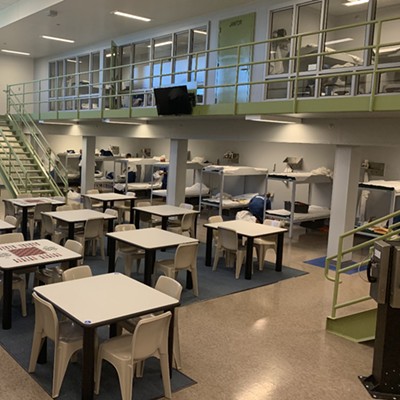A recent presentation from the Santa Barbara County Public Health Department that outlines different scenarios for how the county will fare during the COVID-19 pandemic emphasizes the importance of social distancing, but it raised concerns about how long these guidelines will continue to disrupt thousands of residents’ lives.
According to the presentation that department Director Van Do-Reynoso delivered to the Board of Supervisors during its April 7 meeting, the five hospitals in the county have the ability to create and dedicate 699 beds to COVID-19 patients. This still leaves hundreds of beds open for patients needing treatment for other reasons. But how many of these beds are needed at one time depends on how well people abide by the existing social-distancing guidelines.
Do-Reynoso presented findings from a model that estimates the dates for when the county will see a peak in people hospitalized, people placed in intensive care units, and people needing ventilators, based on the percentage of social-distancing compliance. However, she emphasized that the pandemic is a fluid situation, and therefore the numbers will change as more data becomes available.
According to the model, if social-distancing compliance is at 40 percent, the number of people hospitalized would peak at 1,198 on June 25. But if social-distancing compliance were to increase to 45 percent, the number of people hospitalized would peak at 682 on July 16. And if social-distancing compliance increased further to 50 percent, this number would peak at 274 on Aug. 20. But even with this level of compliance, the county would need 130 ventilators, which is more than the 97 it currently has on hand.
“At 40 percent, we will be exceeding the capacity for hospital beds, however, at 45 percent, that gap is much reduced,” Do-Reynoso said. “And then at 50 percent, we are well within our current capacity of beds, ICU beds. However, not so much on the ventilation.”
Do-Reynoso said to measure social-distancing compliance, the county is relying on cellphone data from Google and other companies that shows how far and often people are traveling. Based on this, and anecdotal data from the county Sheriff’s Office and her own department, Do-Reynoso said she estimates the county is around this 50 percent mark. But she acknowledged there’s a lack of preciseness with these numbers.
According to these models, even with the existing social-distancing guidelines and the statewide stay-at-home order in place, the county will continue to have some cases of COVID-19 into October and November. Fourth District Supervisor Peter Adam found this alarming.
“I realize these are extraordinary circumstances … but when you start showing people charts like this that under the best-case scenario we don’t even get down to zero again until after Nov. 1 … that’s not very encouraging to me from an economic perspective of the whole community here,” Adam said.
Keeping these same social guidelines in place until November isn’t sustainable, Adam continued. He added that the county needs to start having a conversation about how to balance the health risks that COVID-19 presents with the financial needs of people who are out of work because of the existing statewide and local health orders that have forced businesses to close.
First District Supervisor Das Williams followed up on Adam’s point and said he agreed this conversation needs to take place. Residents’ lives could depend on it, he said.
“It is a fact that economic collapse and poverty also kills people, so there is an outstanding question of how long you could close most businesses,” Williams said. “I think we can do it for longer, and I think we should do it for longer, but the question is how long you can do it without hurting a whole lot of people.”
As of April 6, 196 people had tested positive for COVID-19 in the county. The majority of the people infected have recovered, but 34 were still hospitalized and two have died.








